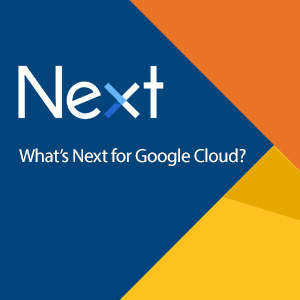
It demonstrated that Google is investing heavily in being the go-to solution for all enterprise capabilities delivered through the cloud. For those responsible for developing, implementing, and managing technology for the enterprise, these announcements address important issues about the future of IT management and overall business strategy.
One of the main reasons enterprises move to the cloud is because it offers a simpler way of managing technology. The Google Cloud Platform (GCP) capitalizes on the technology and business advantages of the cloud by providing the most comprehensive enterprise solution available. CIOs and IT groups can standardize almost all of their operations on GCP and take advantage of an ever-growing ecosystem that is as enterprise-grade as anything else on the market. At the same time, they can do this with GCP for far less cost than if they managed their infrastructure themselves, and they can be assured of higher adoption rates among users because of the emphasis Google Cloud has on user experience.
Among these 100 announcements were partnerships with many vendors that SADA already works with, and technology we’re currently using with our customers. Since we have created a successful discipline for using GCP, and because we see the results of so many different types of enterprises, we want to offer our own view on what’s coming from Google Cloud and how it will improve the way organizations operate.
Google Cloud as the enterprise cloud engine
Of course, Google started with consumers, and has always been hyper focused on the user experience. Part of their genius comes from extending that same mindset to how they develop enterprise solutions. Users, consumer or enterprise, are able to use Google applications in a seamless experience; one login will give you access to a personal productivity suite that can easily add functionality as your needs change. Most Gmail and Google Calendar users don’t even think about where their data resides, or what applications are being integrated to deliver customized results. What they want is access to usable data, and SADA works with companies to use Google Cloud Platform to give their users seamless access to the data that’s most important for them to be successful in their work.
Making 100 announcements in one week may seem like a recipe for confusion, but on the contrary, Google Cloud just keeps providing more ways to align, connect, and simplify. SADA is helping organizations adopt and manage GCP as a transformative solution for their IT operations. One of our goals with customers is to integrate apps and data, but more importantly, to do so in a completely unified environment. Enterprises can use GCP to better understand user behavior, technology capabilities, recognize new channels, deliver customized solutions, and identify trends unseen by humans.
Within such a framework, an organization can be more effective at using data as assets, and then extending those assets through more channels that reach more customers. Among the Google Cloud Next announcements were multiple APIs, add-ons, and other features that enable the creation of additional ways for customers and other stakeholders to engage with a company. This is significant because it allows organizations to create value from their data and deliver it where users/customers want to interact. This is generally possible with almost all cloud software, but Google essentially does the leg-work so IT teams can focus on contributing to strategic business goals rather than more rudimentary tasks like integration and management.
Machine learning and Google Cloud’s emphasis on innovation
A perfect example of Google’s intentions and ability to support enterprise IT are shown in the multiple machine learning announcements made during Next. Consider developments like the availability of their Cloud Machine Learning Engine and new customers like Disney and eBay who will be using Google machine learning capabilities. Google is essentially offering a cloud-based model for artificial intelligence that even the most well-financed IT organizations would have a hard time replicating. Smart organizations know that machine learning as a technology requires continuous evolution in terms of how it manages new data. In other words, a machine learning environment is typically about considerable caretaking in order to process data from new sources and in more efficient ways. Google proves with these announcements that the discipline they’ve created around AI and machine learning is capable of handling even the most challenging application needs on behalf of their customers.
These machine learning developments equate to scale on a lot of different levels. SADA’s customers have come to us with creative, market-defining concepts, and while they don’t lack the intellectual power to put them into reality, they do lack the resources and have no interest in “reinventing the wheel”. We are first able to enhance the out-of-the-box machine learning capabilities and help tailor a customized solution for their specific enterprise needs. Additionally, for these organizations, irrespective of their size, we help with two main issues, both having to do with scale. First, they are unable to scale their own development efforts to get to market quickly. Secondly, they may not be fully prepared to operate on the data that results from machine learning efforts.
As Google partners, we use our insight to create a road map for integration of applications within a model for desired data results. Those results are typically the information that acts as a product or market differentiator for the company. All of this is done safely and securely, and can be done all within the massive infrastructure that Google provides. Additionally, and as proven by their Next announcements, Google never stops innovating. For GCP users, that innovation is seamlessly passed to them.
Creating the optimal IT environment
Smart enterprises know that speed is critical; whether it’s faster time to market, or embracing failing-forward, time can be either a killer or a savior. Yet, when an organization is moving quickly to adopt new technologies and deliver incremental functionality, they can lose sight of the bigger picture; ultimately, what you can do long-term is going to be more important that what you can deliver immediately.
GCP’s broadening footprint provides a ready-made (and growing) framework for an organization’s data and IP assets. Because it’s such a massive network of partners and functionality, GCP customers who are thoughtful about their plans and intent ultimately have the most success. For some companies, just getting accustomed to a consumer-like interface that operates in the cloud is an adjustment. Others desire, but struggle, with how to adopt multiple Google solutions so they can reshape their IT architecture. All these announcements and advancements from Google can be a bit overwhelming. The SADA team continues to evaluate how to use all of these new features and developments to help customers not just integrate and use Google most effectively, but also how to efficiently adopt it for all different types of stakeholders. With Google’s platform of innovation, this creates a continuous approach and mindset to using technology as a strategic tool.
As GCP evolves their offerings, customers become more able to use their data and internal IP capabilities in a strategic way. They can reduce the amount of pure execution required to package, deliver, and manage data, and instead rely on the mechanisms GCP offers, while simultaneously focus on building channels and strategies to connect with customers.
So What’s Next for Google Cloud?
These are exciting times for GCP, but then, when has Google ever been boring? For enterprises, there is clearly now a fully comprehensive alternative for monolithic applications that require massive cost and effort just to deploy and maintain. GCP provides an incredible set of solutions, and SADA can help create frameworks and processes to fully take advantage of this new way of operating with your IT investment. Want to take a closer look? Join us for our May 31st webinar with Google to take a deeper look at what’s next!
Simon Margolis
Director, Cloud Platforms
SADA Systems




